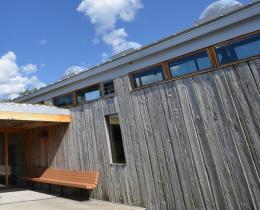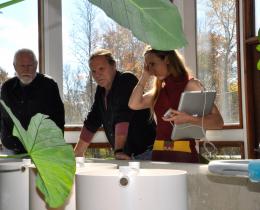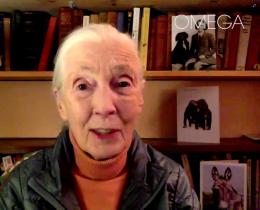In the summer of 2011, a group of prominent educators and scientists, including two Nobel laureates, offered up a vision for how science should be taught to children, from kindergarteners to high school seniors.
One thing was clear: The established model of memorizing facts and spitting them back had to be replaced in favor of something more engaging and practical.
“That is the failing of U.S. education today, that kids are expected to learn a lot of things but not expected to be able to use them,” Helen Quinn, a retired physicist from the SLAC National Accelerator Laboratory in Menlo Park, California, told the New York Times at the time.
Their report, A Framework for K–12 Science Education, became the basis for new science education standards that were published in 2013 and have since been adopted in whole or in part by 39 states and the District of Columbia. Among the changes: The standards included a brand new recommendation that climate change be taught as early as middle school.
A Solutions-Based Approach to Climate Change
Fast forward to 2017: A group of 200 scientists and researchers released a plan to reduce (or draw down) atmospheric concentrations of carbon. Drawdown: The Most Comprehensive Plan Ever Proposed to Reverse Global Warming became a New York Times bestseller and sparked a growing, worldwide movement.
For science educators seeking to inspire students, the timing could not have been better.
“When I first received this book, I looked at it and thought, ‘Oh my God, these are the science standards come-to-life in a science book,’” David Jacob, regional science coordinator for Putnam Northern Westchester (NY) Boards of Cooperative Educational Services (BOCES), said in an interview.
Jacob says that Drawdown is a particularly useful resource because it not only describes and explains 80 well-established and 20 developing solutions to global warming, it also provides mathematical calculations of how each of those solutions may manifest in the world. Teachers can use the data to design explorations of the solutions, which is exactly the kind of work that is the basis for the standards.
Standards Prepare Students for Deep Thinking
The Framework report describes the overarching goal this way: “Given the cornucopia of information available today virtually at a touch—people live, after all, in an information age—an important role of science education is not to teach ‘all the facts’ but rather to prepare students with sufficient core knowledge so that they can later acquire additional information on their own.”
The report identifies three areas of exploration across grades K-12. They are:
- Scientific and engineering practices
- Crosscutting concepts
- Disciplinary core ideas in science
The first category, scientific and engineering practices, focuses on how scientists and engineers do their jobs, including analyzing and interpreting data; planning and carrying out investigations; developing and using models; and constructing explanations and designing solutions.
Crosscutting concepts include patterns; cause and effect; scale, proportion, and quantity; systems and system models; energy and matter; and structure and function. They provide students with ways to connect knowledge from the various disciplines into a coherent and scientific view of the world.
Disciplinary core ideas integrate practices and concepts in four areas—life sciences; physical sciences; earth and space sciences; and engineering, technology, and the applications of science.
All of this means that students are now being asked to carry out investigations, rather than commit facts to memory.
For instance, one performance expectation asks middle school students to “apply scientific principles to design a method for monitoring and minimizing a human’s impact on the environment.”
“It’s not asking students to memorize the monitoring and minimizing principles of human impact on the environment,” Jacob said, “but rather, the students are supposed to be designing that themselves.”
Study of Solutions Provides Hope & Inspiration
Project Drawdown, the nonprofit arm behind the research, recognizes the potential of using the bookas a learning tool that inspires as much as it educates.
“Children need and deserve to be educated in a way that allows them to fall in love with the living world, with life—to discover it through the lens of awe and wonder, including the miracle of climate, as opposed to the disaster of climate,” Project Drawdown Executive Director Paul Hawken told Sierra magazine.
Drawdown Learn is an initiative that seeks to unpack the rich learning opportunities of Drawdown and its data and link them to the new science standards. Project Drawdown has partnered with the Omega Center for Sustainable Living to advance that effort.
“We now know that students need to take a series of pieces of information, make sense out of them, and then construct some kind of explanation from multiple sources,” Jacob said, “because that is real life. That is what we do in the real world.”



